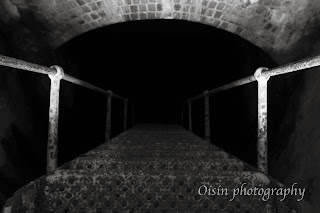I was going to kick this article off with the old saying "A picture is worth a thousand words". Then I remembered how absolutely horrendous that statement is and decided to have a bowl of fruit and fiber instead. While deep in thought, munching on a cereal that still has yet to earn my trust, I realized that maybe it's not such a bad motto. Sometimes a single frame can tell you a more lucid story than a novel, a movie or a song. In some cases, all you need is that one single image to sum up your story. Maybe you aren't even trying to tell a story, maybe you've just taken a photograph of something you found interesting on the way home from work or college. Now maybe someone is browsing through your photographs and they, after some time, accord that single image a huge back story, guts and all. You've just told a story, presented a narrative, without even knowing it. That's perception for you.
I'm not well schooled in the art of photography, I took a class two years ago, so my vocabulary and knowledge is limited, but if I gained anything from that class; I learned that a still frame can stimulate the human mind in ways that the moving image cannot. The moving image arrives and leaves, the still image remains and allows for absorption and thus, imagination. Depending on how eclectic your imagination is, an image of a Wino passed out on a park bench can mean absolutely anything. I'm not the sort of person that stares at such an image and tries to give it meaning, because I'm about as cultured as Billy Roll, but I can at least see certain things in an image that others may not and vice versa. I understand that an image can evoke feelings where the moving image cannot. Sometimes those feelings are of absolute terror.
Now you know where this is whole thing is going.
 |
| God disemboweling himself, Begotten (1990) |
The above image is one that has always made me feel extremely uncomfortable. Not because of the religious connotations or the act of disembowelment itself, but rather how the image is presented. The blacks, the whites, the shapeless form wrapped in blankets, the stains and the shadows. This, for reasons I can't explain, has always disturbed me. I've sat through the entire film and though it was an uncomfortable experience in itself, this one still image stands above the plot, the soundtrack (if you can all it that) and the inhuman actions depicted within. That's the power of a single image. That's what a single shot can do.
Suggestive imagery
As I stated above, I have little understanding of how one can conceptualize and produce a still image that can frighten you, I do however know two photographers who seem to have eagle eyes for ghoulish atmosphere. The first set of images, which we'll call "suggestive imagery", are from Bray-based photographer Oisin Smith. I use the term "suggestive", because the images invite you in, but you're not entirely sure what you're in for.
 |
| Abandoned Reservoir |
 |
| Smoky Water |
Note how both of those images act as pathways. A set of steps leading down to complete darkness, water feeding through a dark tunnel. These are ominous photographs and it doesn't take a broad imagination to paint a picture of something very terrifying lurking in those dark caverns. This is why I say that they are suggestive, there's nothing there to be immediately frightened of, but there could be if you allow your mind to wander. Whether they were produced intentionally to curdle the blood is irrelevant, because they do that job by themselves.
Distorted imagery
The following images were produced by photographer Mary-Kate Hardy, hailing from Greystones, a town with (if my memory serves me) an abundance of derelict and haunting buildings. It's no surprise then that some of Mary's photography addresses the eeriness of a desolate building. However, it's her pinhole series that I found to be most disturbing and nightmarish. Have a look for yourself:
Any of you that have ever suffered from sleep paralysis will immediately recognize these images. Obscured and murky, they don't seem to tell an immediate story at all, because they don't need to. Comparable to the distorted, disfigured images of God from Begotten, it's all about the colours (or lack thereof) and the shapelessness. Much like Oisin's work, these photographs allow your mind to wander, but they're recognizable. We've all had nightmares before and this distorted style of photography is as close to capturing a nightmare as you can get.
***
There are plenty more avenues to travel down with regards to horror and photography and thankfully, I happen to know a number of photographers with their own impressions of what makes for a frightening image. Until the next time.



No comments:
Post a Comment